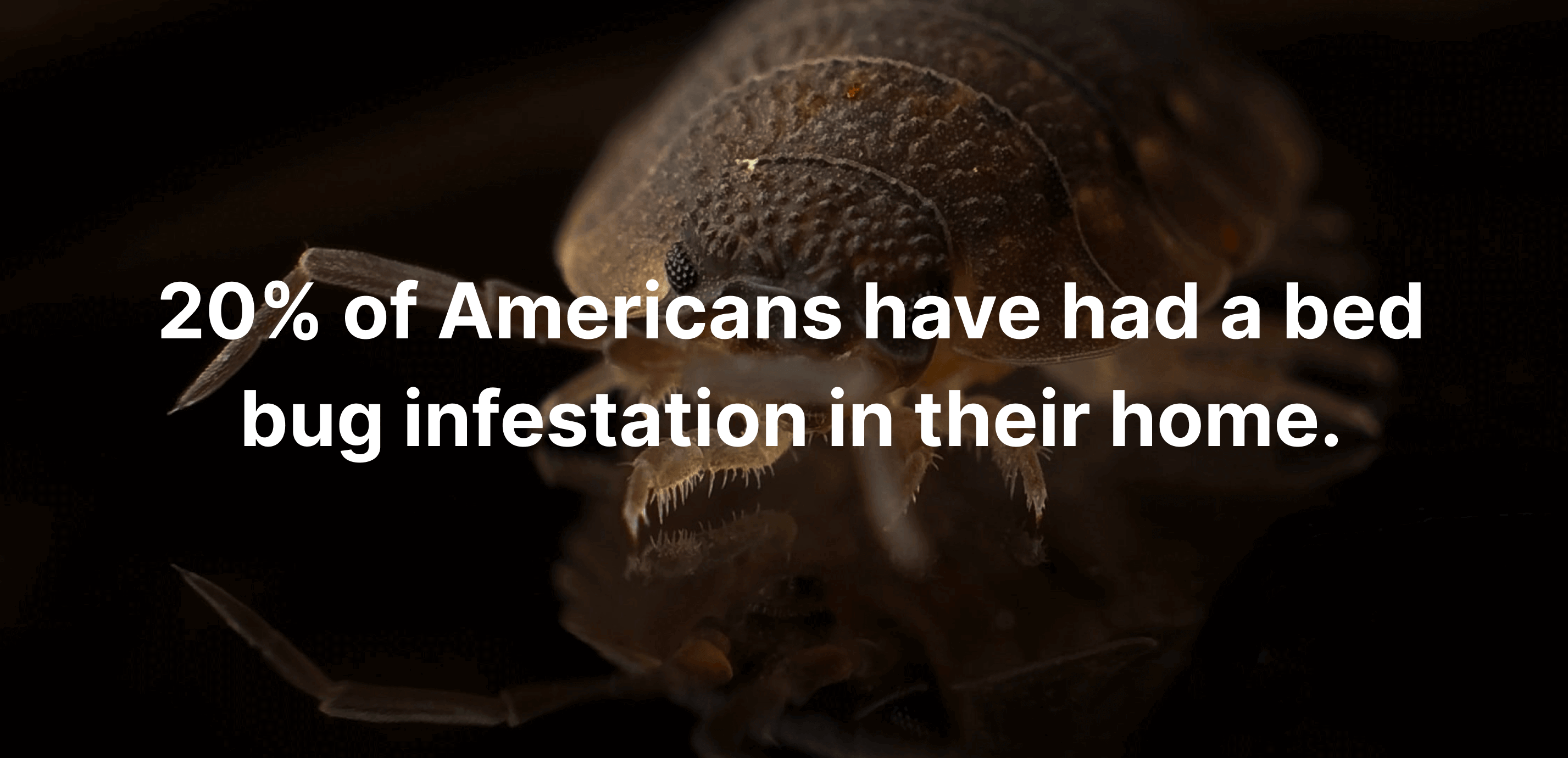How Many Hoarders Are There In The USA?
In the USA, it's estimated that somewhere between 5 million and 14 million people have hoarding disorder. That's 1.52% to 4.25% of the population.
On this page you’ll find up-to-date hoarding disorder statistics, including:
- How many hoarders are there in the world?
- How many people are hoarders in the USA?
- What percentage of the population are hoarders?
- What country has the most hoarders?
- Hoarding demographics
- A whole lot more
Let’s dive right in.
Key Hoarding Statistics and Trends:
- It is estimated that around 2% – 6% of the global population suffers from hoarding disorder. This means there are 158-474 million hoarders globally in 2021. (IOCDF)
- In the USA, it's estimated that somewhere between 5 million and 14 million people have hoarding disorder. That's 1.52% to 4.25% of the population. (Scientific American)
- The average age of diagnosed hoarders is around 50 years old. (Scientific American)
- Most hoarding disorder symptoms appear around the age of 16. (APA)
- A study conducted by researchers at Binghamton University in 2011 revealed that over 90% of diagnosed American hoarders were overweight.
- Adults over the age of 55 are three times more likely to display hoarding disorder behavior than adults between the ages of 34 and 44 years old. (The Recovery Village)
- Around 25% of people diagnosed with OCD (obsessive compulsive disorder) also have hoarding disorder. (The Recovery Village)
- Recent scientific studies have found a genetic link to hoarding in individuals with OCD. The findings suggest that a region on chromosome 14 is associated with the symptom. (NIH)
- There are more hoarders in South Carolina than any other state.
- Most people with hoarding disorder don't realize they have a problem until it is pointed out to them. In fact, it can be hard to convince them that they have a problem. (NHS)
- Hoarding disorder affects men and women equally.
- Families that hoard inside of their house have higher rates of children struggling with mental health issues.
Global Hoarding Disorder Statistics
Hoarding disorder is a condition in which the afflicted person hoards a massive amount of possessions, many of which are useless or invaluable.
It is a mental condition in which they can't figure out what to keep and what to discard of, and it becomes such a huge problem that the person's quality of life is severely diminished. Keep reading to find global hoarding statistics.
Overview Of Hoarding Statistics
It is estimated that around 2% – 6% of the global population suffers from hoarding disorder. (IOCDF)

Almost one in five people diagnosed with hoarding disorder also have OCD symptoms.
It's a common misconception that hoarding is a subset of OCD but these symptoms are unrelated to hoarding.
On the other hand, around 25% of people diagnosed with OCD (obsessive compulsive disorder) also have hoarding disorder.

A whopping 75% of people with hoarding disorder suffer from other mental health conditions.
While OCD is a common one, other examples are depression, anxiety, and ADHD (attention deficit hyperactivity disorder).

It's difficult to pinpoint exactly which country has the most hoarders or the least hoarders because research on the disorder is fairly new and not very extensive yet.
Differences in cultures can also have an effect on the definition of hoarding from country to country. However, some studies have observed that the disorder seems to have the same infection rate across all developed countries.
U.S. Hoarding Disorder Statistics
Hoarding disorder has been studied the most in the United States. However, researchers have a long way to go. The research that has been completed so far yielded the following statistics about American hoarders. We've compiled up-to-date U.S. hoarding statistics, keep reading.
In the United States, it's estimated that somewhere between 5 million and 14 million people have hoarding disorder. That's 1.52% to 4.25% of the population.

There are more hoarders in South Carolina than any other state.

In fact, it seems that a large majority of American hoarders are in the south.
Washington D.C. has the lowest percentage of hoarders at 2.8%.
A study conducted by researchers at Binghamton University in 2011 revealed that over 90% of diagnosed American hoarders were overweight.

This statistic shows that hoarding disorder seems to be bad for physical health as well as mental health. More recently, there are providers of home and community based services, such as Bright Futures, that help children struggling with mental health issues.
Hoarding Disorder Statistics by Demographic
Current research suggests that hoarding disorder seems to affect everyone the same way regardless of race, age, culture, or social background. The research also shows that the disorder seems to follow the same patterns across all demographics. However, there are a few interesting hoarding demographics to look at.
Most hoarding disorder signs appear around the age of 16.
However, it's not uncommon for signs of the disorder to appear as early as age eleven.

The average age of diagnosed hoarders is around 50 years old.
Although signs appear at a young age, these signs can be subtle. The disorder usually reaches a serious stage during senior years making it more noticeable and easier to diagnose.
People over the age of 55 are three times more likely to suffer from a severe form of the disorder than people ages 34 to 44 years old.

Because the severity of the disorder increases with age, hoarding disorder can be thought of as a disorder that only affects the elderly.
While it can occasionally become severe at younger ages, it's unlikely.
When it comes to gender, there doesn't seem to be any factors that influence the rate of hoarding disorder diagnoses among them.
Research shows that hoarding disorder affects men and women equally.
The few existing studies on Japanese people with hoarding disorder suggest that the clinical symptoms are on trend with current global studies.
These findings are consistent with the current consensus that hoarding disorder affects all people in the same manner despite any biological and environmental differences.
Research on hoarders in China seem to align with the general consensus that the symptoms and effects of hoarding are the same for everyone regardless of their background.
However, diagnosing and treating the condition for Chinese people can be a bit more challenging because in their culture, they are encourage to store their possessions.
Facts About Hoarding Disorder
Here is a list of the most interesting hoarding facts we could find after doing several hours of research. Keep reading to find interesting facts about the hoarding disorder.Possible Causes of Hoarding Disorder
- As defined in the 2013 version of the DSM-V, hoarding disorder is a constant, almost uncontrollable urge to collect possessions paired with a feeling of serious disturbance at the thought or process of getting rid of them.
- The cause and risk factors of hoarding disorder is unknown. However, recent scientific studies have found a genetic link to hoarding in individuals with OCD. The findings suggest that a region on chromosome 14 is associated with the symptom.
- Hoarding can cause serious interference in the way a person functions throughout life. This includes social, career, and personal life. Many hoarders are loners and may suffer from paranoia. They may even quit their jobs and end up in debt because the disorder interferes with their perception of life and reality.
- Most people with hoarding disorder don't realize they have a problem until it is pointed out to them. In fact, it can be hard to convince them that they have a problem until the problem is out of control.
- You would think that hoarders must be unaware of the clutter around their homes, but this is far from the truth. As the disorder becomes more noticeable, hoarders eventually become aware of their mess. The problem is that they don't know what to do about it because they have the intense need to keep all of it.
- Unlike collectors who take pride in their collections, hoarders often feel shame and embarrassment when others see their collections. They are aware that they way they live is not right, but again, they can't figure out how to fix it. This is a top reason why they end up withdrawing from people.
- People with hoarding disorder are perfectionists. This may seem strange considering the state of their homes, but they are so afraid of getting rid of something that they'll need later, they just keep everything to avoid that. That's where the perfectionism comes in, or at least the idea of perfectionism. Obviously, in reality, living in squalor is far from perfect.
- Digital hoarding is a new area of exploration in the scientific community. There is limited research in the area, but the studies that exist suggest a strong similarity to physical hoarding. In the studies, subjects showed the same emotional attachment to their digital collections as well as the same psychological distress when these collections were disposed of.
- Hoarding disorder includes animal hoarding. The lady with 30 cats in her house and no friends...complete hoarder! Cats are the most popular hoarded animal, but dogs, birds, and rabbits are common.
- For children who have hoarding disorder, a situation known as family accommodation may occur. This is when the parents allow the children to collect things in order to ease their anxiety. However, allowing the child to do this makes the disorder worse.
- True hoarders cause a lot of health and safety risks to themselves and the people around them. In fact, as the issue of hoarding became more mainstream, many cities across the United States felt the need to intervene by creating hoarding task forces. The first hoarding task force was established in 1989 in Fairfax County, Virginia. It was so successful that many cities quickly implemented them as well.
- In 2014, the City Council of Houston, Texas passed what could be considered as the first anti-hoarding law. This essentially gave police the right to search an apartment, town-home, or other multi-family structure if there were complaints of hoarding. The idea was to be able to get hoarders the help they needed. They would take steps such as removing the hoarder from the home, disposing of the clutter, and fining the hoarder.
Signs of Hoarding Disorder
Here is a list of signs that someone has a hoarding disorder. Read this section to learn about the most common signs of hoarding.
- There is a difference between a collector and a hoarder. Collectors take pride in their collections and keep them neat and organized. A hoarder collects a ridiculous amount of junk that has little to no monetary value.
- Hoarders will have problems managing simple life tasks such as cleaning, paying bills, or planning. They become so overwhelmed with the clutter that it's hard for them to function.
- With a hoarder, organization is out of the question. Their collections will be everywhere and anywhere. They may not even know where to find things that they need.
- Because of their living circumstances, hoarders can't function well enough to develop or maintain relationships. They will even choose their clutter over their loved ones.
- Since hoarders have such an emotional connection with their junk, they may refusing to let people touch or borrow things. They may become extremely disturbed if someone attempts to organize them.
- Hoarders tend to be indecisive which is what leads to the clutter in the first place. They can't decide what's important and what's not. Unfortunately, this indecisiveness doesn't just apply to their collections. It's a problem they have with life in general due to the fear of making the wrong choice.
- Hoarders can't pass up free stuff and extreme coupon clipping. To them, it's the perfect way to get more stuff, even if they don't need it.
- Since a hoarder's home is full of invaluable junk, the most noticeable sign is them living in unusable space due to clutter. Their bath tubs may be full, so they can't take a shower. They might be incapable of getting to their stove to cook a meal because of junk that's piled on it or in front of it. Perhaps they've stored inedible items in the refrigerator, which leaves little to no room for actual food.
Possible Causes of Hoarding Disorder
The cause of hoarding disorder is unknown. However, scientist have a few theories that are being tossed around and studied. These theories mostly deal with mental health rather than a physical ailment.
- Some scientists believe that hoarding disorder stems from difficulty dealing with emotions.
- Another popular theory is traumatic experiences. Traumatic experiences could be physical or mental in nature. In fact, this could go hand in hand with difficulty dealing with emotions from the traumatic experience.
- Negative childhood experiences may be a cause of the disorder, especially if it was traumatic. This is a strong theory since signs of the disorder often show up during adolescence.
- Scientists have noticed that many people with hoarding disorder has one or more other family members that have the disorder as well. This supports the latest research in the genetic link of the disease to chromosome 14.
- It's no secret that other mental health issues can cause hoarding. In these cases, fixing the underlying mental health condition can eliminate or at least reduce the hoarding behavior. With true hoarding disorder, eliminating the other mental health conditions won't fix the problem.
Complications from Hoarding Disorder
Hoarders often have bigger problems than clutter. Hoarding can get out of control, leading to situations that are dangerous and even deadly for the hoarder and others around them. This danger to the community is what lead to the development of hoarding task forces.
- The excessive amount of clutter makes cleaning very difficult. This leads to a dirty home that is susceptible to infestations and diseases. If the problem is not taken care of, these infestations can begin to spill out of the home, affecting nearby homes.
- The risk of dying in a fire may be the biggest problem a hoarder will have. Not only can clutter catch on fire inside the home, but clutter may block the exits in the event of a fire. It can also cause more significant smoke inhalation since the smoke won't have as much room to spread out.
- Trips and falls are common in a cluttered home, especially one as cluttered as a hoarder's home.
- It's not unheard of for a hoarder to be injured or to die from being buried under their clutter. All the clutter can essentially become like booby traps. They can fall over or collapse on people, if kept in large piles.
- A hoarder's home can be a hazard for first responders. First, it makes it difficult for first responders to get inside the home. After that, it makes it difficult for first responders to get out of the home. In fact, the clutter can fall over and trap first responders just like it could do to the hoarder.
Treating Hoarders
This final section will cove the common methods people use to treat hoarders and help them recover. Keep reading!
- Medications are rarely used to treat hoarding disorder unless the person is suffering from severe anxiety or depression. In fact, there are no medications approved by the FDA to treat the disorder. The most common therapy (and the only therapy right now) is cognitive behavioral therapy - more specifically, psychotherapy.
- Knowing that there is not many treatment options for hoarding disorder, one may choose to try the route of prevention. Unfortunately, there is no way to prevent hoarding disorder because scientists don't know what causes it.
- Simply cleaning up a hoarder's home doesn't solve the problem. That's because they don't see the problem. In fact, this may just make matters worse as they'll be extremely disturbed by the loss of all their things. They'll simply collect more junk again, and with a vengeance.
- It's important to realize that the act of hoarding isn't necessarily a bad thing. Hoarding is a coping mechanism. The problem is when this coping mechanism becomes maladaptive. It worsens the person's situation. The person can see the situation getting worse, which makes them feel out of control and can fuel the hoarding.
- There are five levels of hoarding severity. While hoarding disorder can't be prevented, being familiar with the levels can indicate when a loved one needs help early. This way, it's possible that the severity of the hoarding disorder could be minimized.
- A person suffering from hoarding disorder can get better. The disorder won't be cured, but therapy and the support of loved ones can help the person to manage the symptoms.
Conclusion
These are some interesting hoarding disorder stats. If you have more questions, you can email us at hello@getonedesk.com. You may also want to check out our statistics on home organization.
How To Clean Tile Floors

Now you can order cleaning services
in just 5 minutes
















